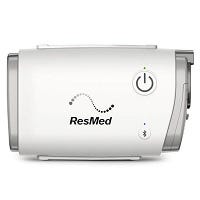We use cookies to make your experience better. To comply with the new e-Privacy directive, we need to ask for your consent to set the cookies. Cookies Policy.
CPAP Comparison Charts
Choosing the Right PAP Machine
For obstructive sleep apnea sufferers, sleep doctors most often recommend Continuous positive airway pressure (CPAP) machines as treatment because it’s the most effective and least invasive treatment available with very few side effects. In fact, people suffering from sleep apnea often notice major improvement after using CPAP for even a single night. There are several very popular machines available from noted manufacturers, and they are all slightly different, with features and options that personalize therapy for various patients’ needs. Before buying a CPAP machine online, we encourage shoppers to do their homework, and use our comparison charts and videos, as well as speak to our customer service representatives via chat and phone in order to make a knowledgeable and informed decision.
Remember that a prescription is needed to purchase a CPAP machine.
Before you purchase a CPAP or BiLevel PAP machine, you must first be diagnosed with sleep apnea. A diagnosis can be determined after an overnight sleep clinic study or a home sleep test that is reviewed by a physician. The sleep doctor or physician will then write a prescription for air pressure or titration level.
Most PAP machines provide pressure between 4 to 20 cm H20. This measurement simply means that if the CPAP hose were submerged in water and the machine turned on, it would blow a column of water 4 to 20cm. The prescription will indicate the type of device (CPAP, Auto, or BiLevel) and the titration level required. When you purchase a machine, the pressure level will be set to your prescription. Unless, of course, you purchase an auto adjusting unit which has a minimum and maximum and pressure is provided based on need.
Some doctors also suggest or even prescribe a heated humidifier to make breathing pressurized air more comfortable. You will need to check to see whether you insurance will reimburse for the cost of the machine.
Other Features that Differentiate CPAP Machines
Our comparison charts specifically note the best selling machines from the most noted manufacturers with the best ratings, such as ResMed or Philips Respironics, Devilbiss,Fisher and Paykel, Somnetics and Human Medical Design.
CPAP Machine Features to Consider
- Auto or Standard CPAP – Traditionally, standard CPAP’s were typically prescribed. Within the last 5 years, auto adjusting units have become significantly more popular due to its comfort level and ability to sense exactly what pressure is needed on a breath to breath basis. We recommend an auto if purchasing a new unit.
- Check to see if the machine works with only certain masks. Many new CPAP users try several masks before deciding on the perfect mask for them. Most PAP machines work with any mask and tubing size because they come with connectors to accommodate them.
- Warranty length – Warranties can differ from machine to machine but is typically 2 years.
Sound level of the machine - Most CPAP machines operate below 30 decibels, basically the pitch of a whisper. However, it is still important to compare the noise level of machines. - Check to see if the Machine Comes with an Integrated or Optional Humidifier. Additionally some travel machines use a waterless humidifier or have humidifiers that disconnect for easier packing.
- Check Size and Weight - CPAP machines are getting smaller and lighter making portability less of an issue.
- Pressure Range and Therapy Mode - can differ from machine to machine but the newest machines work on standard pressure settings of 4-20 cm H2O. Auto units adjust according to need on a breath to breath basis. Most machines also have an automatic altitude pressure adjustment feature.
- Battery and Backup Power - Machines differ in whether they have adapters such as a DC power supply or international plugs, and options for portable batteries as an energy backup. If travel involves no electricity, there are a few options for integrated battery back-up.
- Ramp - This allows for a more comfortable way to fall asleep as pressure gradually increases to the prescribed pressure.
- Exhalation pressure relief - Some machines reduce pressure to make it easier to exhale against the pressurized air while still maintaining the prescribed pressure on inhalation in order to keep apneas from occurring.
- Heated tubing and tubing size - In order to keep the air in the tube at a constant temperature and avoid condensation this is an important feature. The new DreamStation Go travel CPAP employs a 12mm tube that is perfect for travel, but which has the added advantage of making it more mobile while you sleep.
- Mask On/Off Alert - This feature alerts the sleeper if the mask comes off or loses its seal.
- Leak Compensation - Most machines have a feature that increases pressure if it detects a mask leak to make sure you get the prescribed pressure.
- HEPA and Pollen Filters – All machines have more filter options for those with allergies.
- Data History and Coaching – Technology in CPAP therapy has increased dramatically over the last few years. Machines record data so you and your doctor can keep track of therapy progress. Many machines have apps and Bluetooth connection to make it even easier to view sleep data from your smart phone. Some machines only record data on sim card, while most newer machines allow remote access so your doctor can make adjustments in your prescription if necessary, as well as alerting you when it is time to replace equipment or CPAP supplies.







